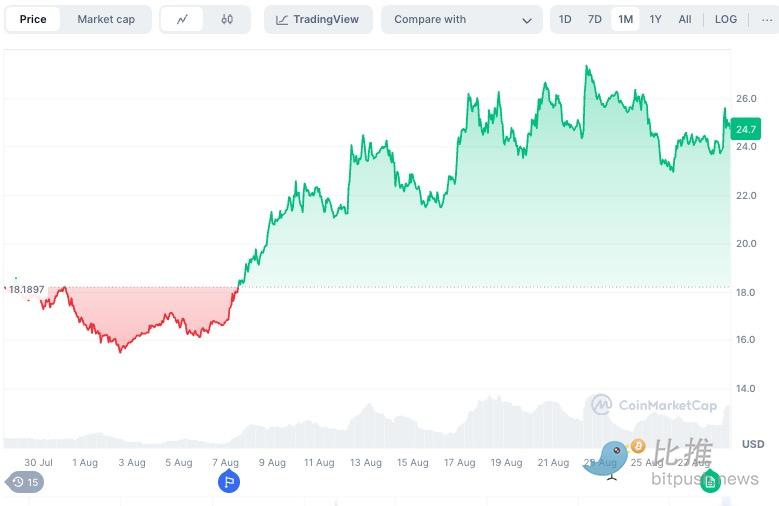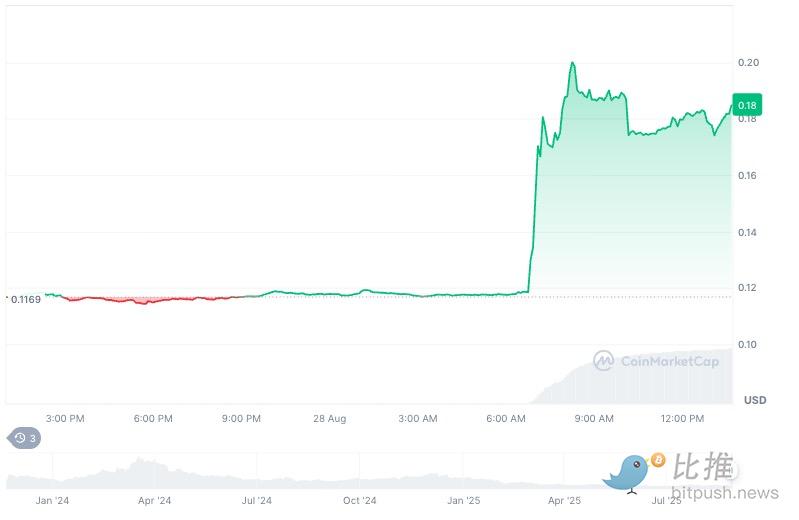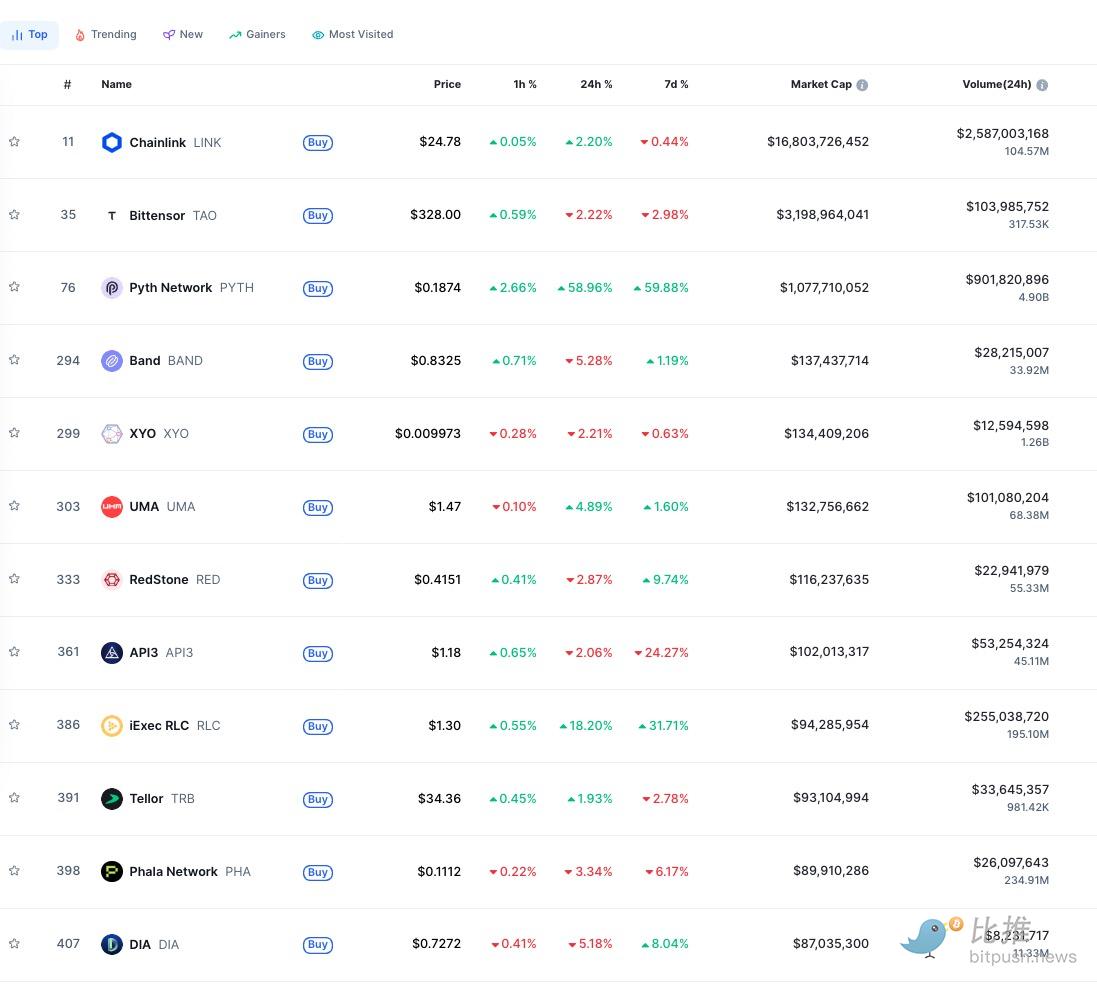The recent resurgence of oracles differs from past emotional speculation.
Written by: BitpushNews
The U.S. Department of Commerce has announced a significant milestone: a partnership with blockchain data service provider Chainlink to directly transfer six key macroeconomic indicators published by the Bureau of Economic Analysis (BEA) onto the blockchain.
These data points include Gross Domestic Product (GDP), Personal Consumption Expenditures (PCE) price index, and final sales in the domestic private sector, which reflect both the overall scale and growth of the economy as well as inflation and consumption trends. They are widely regarded as the core indicators in macroeconomic analysis.

On the technical implementation front, the data will be uploaded to the blockchain via Chainlink Data Feeds, initially covering ten mainstream public chains, including Ethereum, Arbitrum, Optimism, and Avalanche. Meanwhile, the emerging Pyth Network has also been selected to distribute and verify some economic data. In other words, the U.S. government is entrusting its core economic data to decentralized infrastructure for the first time.
This news is widely interpreted as institutional endorsement. In the past, the interface between blockchain and the real economy was mostly driven by grassroots projects or experimental explorations. The official push for data on-chain marks a shift for blockchain from a "closed system of crypto finance" to a "public data layer" serving a broader economic system.
The market senses the change in advance
In fact, the price movements in the oracle sector have already signaled this change. Chainlink (LINK) has been on a steady rise since late July, with a cumulative increase of over 40% in a month, significantly outperforming mainstream assets like Ethereum. After the announcement, Pyth (PYTH) became the market focus, surging over 50% in a day and surpassing a market cap of $1 billion for the first time.


In contrast, other second-tier projects like Band Protocol, UMA, API3, and RedStone also recorded varying degrees of rebound, but their scale and growth rates are far behind LINK and PYTH.
This trend is not coincidental. With the narrative around Real World Assets (RWA) heating up and the government publicly collaborating with oracles, investors' risk appetite is shifting towards infrastructure tokens. In a new market cycle, oracles may return to a "must-have" core position in a bull market.
Use case expansion: More than just "tools"
For a long time, oracles have been seen as the "behind-the-scenes assistants" of the blockchain ecosystem.
During the DeFi explosion of 2020-2021, the primary task of oracles was price feeding: they transmitted price data from off-chain exchanges to on-chain for lending liquidation and derivatives contract settlement. Almost all lending protocols, DEXs, and synthetic asset platforms rely on oracles. However, this role made them seem "invisible," unlike exchanges or popular applications that attract more attention.
The U.S. Department of Commerce's data on-chain changes this positioning. For ordinary investors, this could directly alter the "utility" of blockchain.
For example, if future bonds or savings products can be directly anchored to PCE inflation data, then on-chain financial products purchased by individual users can truly synchronize with the real economy. The on-chain GDP data could give rise to derivatives or structured products linked to economic growth, similar to "GDP options" or "inflation-hedged bonds." These financial instruments are complex and cumbersome to design in traditional markets, while smart contracts on the blockchain can achieve this at a lower cost.
Moreover, prediction markets will undergo a qualitative change. Past prediction markets often lacked authoritative data sources, leading to limited credibility of results. Now, prediction contracts based on official economic indicators can attract larger participation and serve as auxiliary tools for policy and market research. For scholars, media, and even the government itself, such markets could become a real "thermometer of sentiment."
Another potential use case is risk management. For example, stablecoin issuers or DeFi protocols could use real-time updated inflation and GDP data to dynamically adjust interest rates, collateral ratios, and reserve ratios. In other words, macroeconomic factors will be directly embedded in the operational logic of on-chain protocols, enhancing the entire crypto financial system's risk resistance.
These application scenarios indicate that oracles are no longer just "tools" for DeFi but are becoming the interface between real-world data and the on-chain world. As more government and institutional data goes on-chain, the importance of this interface will continue to rise.
Landscape: One leader, one strong contender, and long-tail experimentation
From a market capitalization perspective, the concentration in the oracle sector is extremely high. Chainlink, with a market cap of about $16.6 billion, holds over 70% of the entire sector, making it the undisputed "sole leader." It has long been a standard configuration for DeFi applications, and its collaboration with the U.S. government further solidifies its industry position.

Pyth has emerged as a "strong second" in the past year. With its advantages in high-frequency financial data and cross-chain distribution, Pyth has rapidly accumulated users in the exchange ecosystem, and now with official endorsement, the market's imagination for it has significantly increased. Although its market cap is only one-tenth of LINK's, its growth rate and ecosystem expansion capabilities make it the only newcomer with a chance to challenge the existing landscape.
The long-tail portion includes projects like Band, UMA, API3, and RedStone. These tokens generally have market caps in the $100-200 million range and play more of a supplementary role in the ecosystem. For example, Band has had some presence in the Asian market, UMA focuses on the "optimistic oracle" model, and RedStone explores modular data services. However, their size limits their ability to play a decisive role in the larger landscape. Investors often view them as "marginal opportunities" rather than core players in the sector.
This "one leader, one strong contender + long-tail experimentation" pattern effectively reinforces capital concentration. Market attention and funds are rapidly focusing on Chainlink and Pyth, creating a "oligopoly effect" similar to traditional tech sectors.
The victory of government-business collaboration?
Behind this collaboration lies more than just technology. Chainlink has long been engaged in compliance and policy communication, having had direct contact with the SEC and the Senate Banking Committee; Pyth has also acknowledged maintaining close communication with the Department of Commerce team for several months. Securing "access tickets" from the U.S. Department of Commerce requires not only code and nodes but also political resources and compliance capabilities.

Commerce Secretary Gina Raimondo has publicly stated the goal of making U.S. economic data "immutable and globally accessible." This statement not only recognizes blockchain but also represents a reconfiguration of the U.S. data governance model. In other words, blockchain is no longer a "disruptor" here but a "tool" incorporated into the government's governance framework.
Does this mean that in the future, only projects that combine government and business can succeed? At least in the field of oracles, the answer seems affirmative. To access core data from the real world, one cannot bypass the thresholds set by governments and institutions. On-chain experiments can be ignited by market sentiment, but to scale, they must receive institutional endorsement.
Investment insights
This resurgence of oracles differs from past emotional speculation, as it combines real demand, official recognition, and capital logic. Chainlink remains solid as infrastructure, while Pyth has become a new force due to its speed and momentum. For investors, oracles are no longer just "behind-the-scenes players" in DeFi but are part of the global data system.
Because of this, the market may increasingly favor projects capable of bridging policy and business. No matter how strong the technology, without institutional entry points, it may still struggle to land; while projects that can obtain official endorsement have the opportunity to become long-term winners.
The recent resurgence of oracles may mark a turning point for blockchain as it transitions from narrative to reality.
免责声明:本文章仅代表作者个人观点,不代表本平台的立场和观点。本文章仅供信息分享,不构成对任何人的任何投资建议。用户与作者之间的任何争议,与本平台无关。如网页中刊载的文章或图片涉及侵权,请提供相关的权利证明和身份证明发送邮件到support@aicoin.com,本平台相关工作人员将会进行核查。




